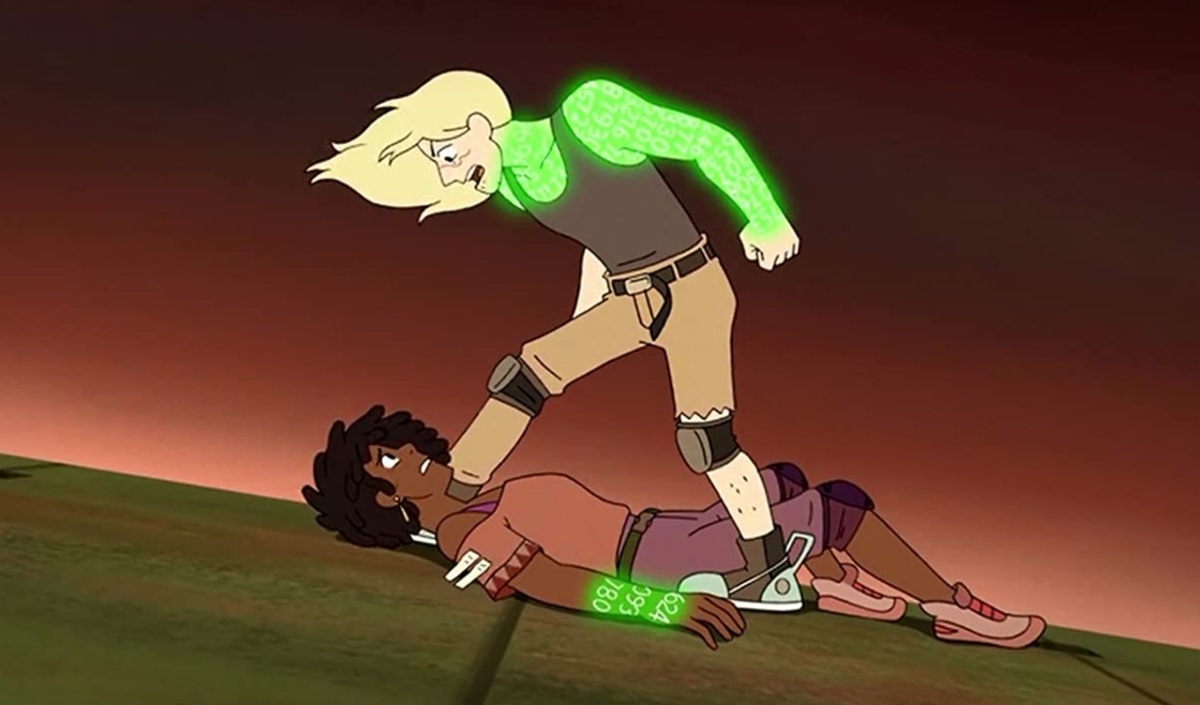Infinity Train Book 3 Went to Dark Places in the Story of Redemption

Infinity Train is one of the best shows on television right now, and every season has upped the stakes to darker levels, but Book 3—Cult of the Conductor was even past Gargoyles’ level of darkness.
**Spoilers for Infinity Train.**
Infinity Train is a series about young people dealing with their personal issues via exploration of a mystical, never-ending train with different cars with bizarre and fantastical environments, where reducing a glowing number on their arm, which represents those issues, is the only path home. In Book 1 & 2, we followed protagonists who understood and used the train in order to accomplish some catharsis. However, in Book 3, we get a look at what the train can be like for young people who use the train to enforce their issues rather than work through them.
The Apex is introduced as a secondary antagonist in Book 2, with their leader, Grace Monore. The Apex is a group of kids who follow the “True Conductor,” and instead of reducing their numbers, they are obsessed with raising the number up and viewing the creatures in the train as “Nulls”—less than nothing. Grace returns as one of the main protagonists of Book 3, along with her second-in-command, Simon Laurent.
In the premiere episode of the season, after committing what is essentially genocide, as established in the canon of the show, Grace and Simon are separated from their cult/group and end up meeting a young girl named Hazel who has bonded with a gorilla named Tuba. This prolonged interaction causes a split between Simon and Grace as the former plunges deeper into darkness and the latter comes to terms with the ideology she has created.
We talk a lot about redemption and how it has come together in children’s media. Infinity Train definitely pushes as far as you can get. Grace and Simon are both hard to root for because while, on one hand, we can understand, narratively, that these are teenagers who have spent their years in a chaotic environment with no guidance. Part of the issue with the train is that, during the period where it was taken over by Amelia, there was no way for these kids to learn better. However, they still went around terrorizing and wheeling (a.k.a. murdering) non-human inhabitants of the train. It is dark and cruel, and there is no excuse for that behavior.
What does matter is that Grace realizes she was wrong and opens herself up to the influences of better angels. Simon, instead, chooses to dig in deeper. That is the difference between the two of them. Neither was irredeemable until that moment when their worlds divided. In the story of redemption, it is the choices you make once you know you are wrong that seal your fate. Simon is sympathetic because we see clearly that he started off on the train as a scared boy, but now he’s older and chooses to harm his friends in order to hold on to those lies.
I can’t explain how Infinity Train managed to make this work so well. Even with the ending being a bit rushed, I found it to be a powerful message. Grace is going to make amends by helping the young children she once led astray onto the right path. The show is a little too dark for young children, but for a child-at-heart like me, it worked exceptionally.
(image: HBO Max)
Want more stories like this? Become a subscriber and support the site!
—The Mary Sue has a strict comment policy that forbids, but is not limited to, personal insults toward anyone, hate speech, and trolling.—
Have a tip we should know? tips@themarysue.com